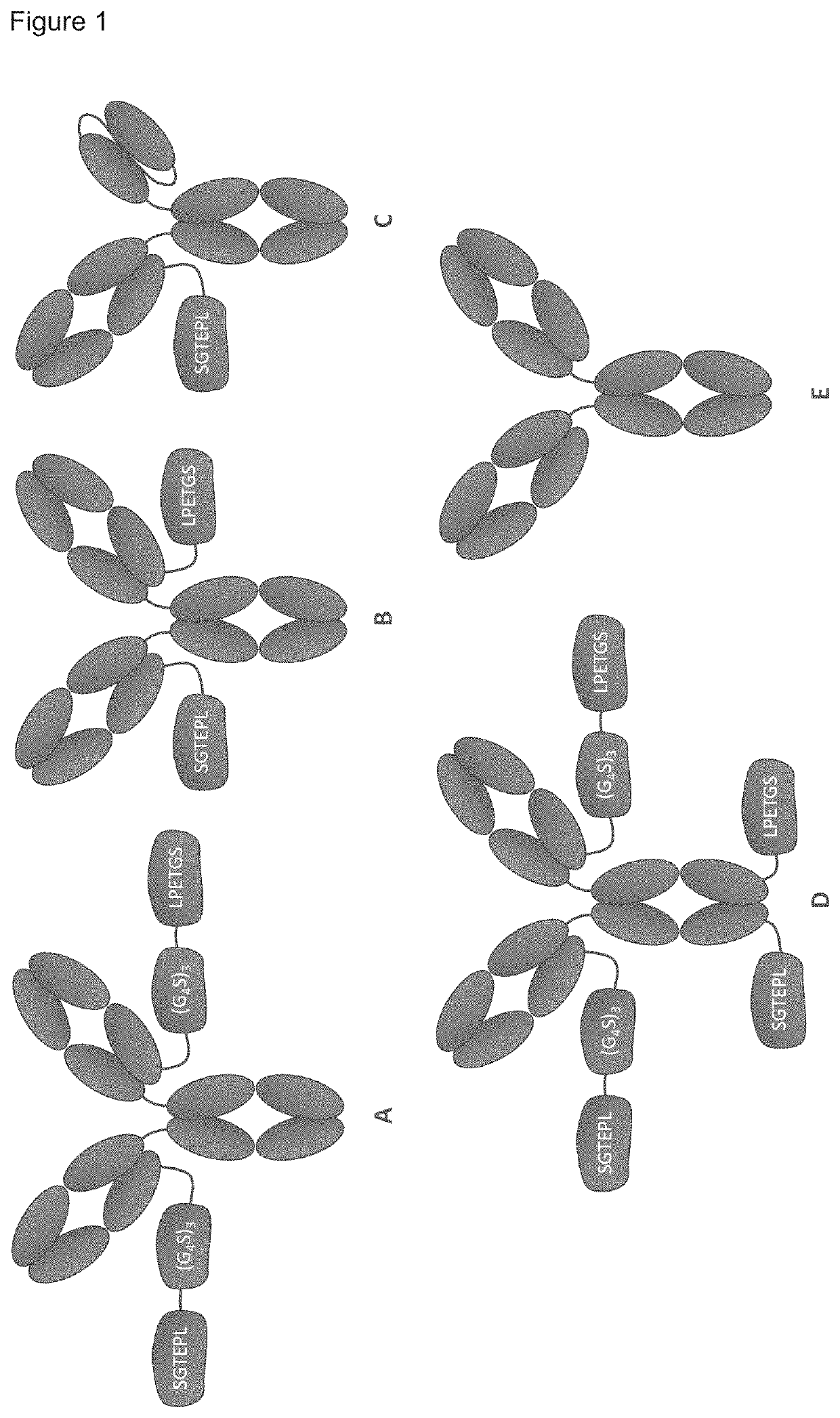Combination therapy utilizing DNA alkylating agents and atr inhibitors
a technology of atr inhibitor and dna alkylating agent, which is applied in the field of combination therapy, can solve the problems of limited effectiveness of hepatic toxicity, and achieve the effects of mild tumor growth inhibition, strong synergistic effect, and enhanced cytotoxic effect of duocarmycin bearing ad
- Summary
- Abstract
- Description
- Claims
- Application Information
AI Technical Summary
Benefits of technology
Problems solved by technology
Method used
Image
Examples
example 1
Screening for Synergistic Drug Combination Partner for Duocarmycins
[0432]The screening of synergistic drug combinations can be accomplished by performing a dose-matrix assay. Therefore, two drugs are serial diluted and mixed at every dose level, yielding a dose-matrix. The drug combination can be additive if the effects of the combination are identical to the added effects of the single agents. However, the effects of the combination might also be stronger than the activity of the single agents. This scenario is termed synergy, whereas weaker combination effects compared to the single agents are termed antagonism. A dose-matrix assay is depicted schematically in FIG. 2 which illustrates the outcomes of a dose-matrix assay: additivity, antagonism and synergy.
[0433]The screening was conducted by serial diluting the duocarmycin derivative DUBA (10) and the DDR inhibitors. The serial dilutions were added to HCC-1954 or MDA-MB-468 cells either alone or in combination subsequently. DUBA w...
example 2
Synergistic Drug Combinations of a Duocarmycin library with ATR inhibitor AZD6738
[0448]A series of duocarmycin variants was studied after the identification of the synergistic drug combination DUBA plus AZD6738. This should verify that the observed synergy is not an effect caused by DUBA, but duocarmycins in general. Therefore, the duocarmycin variants were clustered into two groups according to their structural features. In the trimethoxy indole (TMI)-series, the binding unit of the duocarmycin is kept constant, while the alkylating unit varies. The alkylating unit of Duocarmycin SA (13) and CBI-TMI (24) consist of a tricyclus, however, with different stereoelectronic properties. The alkylating unit of the latter have a chiral center. Contrasting this, three achiral duocarmycin variants were investigated. From these, two variants, duocarmycin 35 and 36, had a bicyclic alkylating unit, while 37 had a monocyclic alkylating unit. The structures of the TMI-series are summarized in tabl...
example 3
Biological Activity of ATR Inhibitors
[0454]In the combination experiments with AZD6738 it was confirmed that the duocarmycin variant plays a role in the extent of the synergistic effects. In this work, several different ATR inhibitors were investigated to elucidate the influence of the ATRi on the combination effects. An overview of the chemical structures of the ATRi studied in this report is given in FIG. 5. The ATRi were clustered into four groups. The ATRi from Astra Zeneca AZ20 and AZD6378 are closely related with an identical core unit. Bayer ATR inhibitors also had identical core units. The three Bayer ATRi differed only in R1. The phase I ATRi BAY1895344 carried a pyrazole residue and the ATRi BAY73 was carrying a methanesulfone pyridine residue in R1. The Bayer ATRi BAY286 carried a methanesulfone moitety in R1. VE-822 was structurally unrelated to the remaining cluster.
[0455]Table 6 summarizes characteristic properties and the chemical structures of the ATRi. Two compounds...
PUM
| Property | Measurement | Unit |
|---|---|---|
| volume | aaaaa | aaaaa |
| flow rate | aaaaa | aaaaa |
| wavelengths | aaaaa | aaaaa |
Abstract
Description
Claims
Application Information
 Login to View More
Login to View More - R&D
- Intellectual Property
- Life Sciences
- Materials
- Tech Scout
- Unparalleled Data Quality
- Higher Quality Content
- 60% Fewer Hallucinations
Browse by: Latest US Patents, China's latest patents, Technical Efficacy Thesaurus, Application Domain, Technology Topic, Popular Technical Reports.
© 2025 PatSnap. All rights reserved.Legal|Privacy policy|Modern Slavery Act Transparency Statement|Sitemap|About US| Contact US: help@patsnap.com



